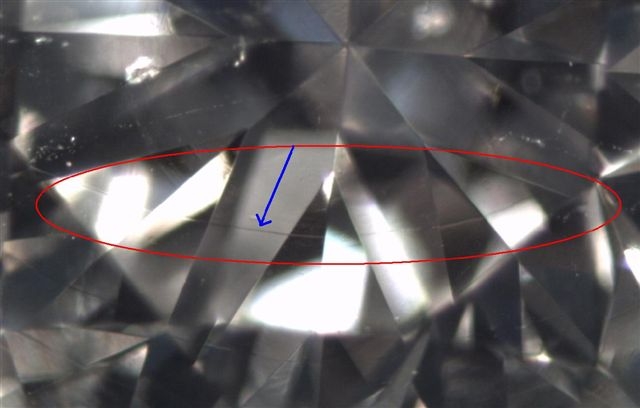The Natural Growth Patterns in Diamonds
Graining refers to faint wavy, hazy, oily, or shadow-like lines that can appear inside a diamond or on its surface. These patterns result from irregular growth and crystallisation during the diamond’s natural formation deep within the Earth. Graining is sometimes referred to as “growth lines” or “growth marks”, and it can affect a diamond’s clarity, transparency, and overall visual appearance.
What Causes Graining in Diamonds?
Diamonds form over millions to billions of years under extreme heat and pressure deep in the Earth’s mantle. However, not all diamonds grow perfectly. Occasionally, crystallographic irregularities occur, leading to graining. These irregularities may be caused by:
Uneven atomic growth – Fluctuations in temperature and pressure can cause the diamond’s crystal structure to develop inconsistencies.
Interrupted crystallisation – When a diamond pauses in its growth and then resumes, it may form internal distortions.
Mineral inclusions or impurities – Elements such as nitrogen or boron present during formation can contribute to the development of visible graining.
Types of Graining in Diamonds
Graining can appear in various forms, affecting both internal clarity and surface quality. The four main types of graining are:
1. Internal Graining
Appears as faint lines, streaks, or wispy distortions within the diamond.
Can be colourless, white, brown, or reflective.
Sometimes mistaken for inclusions but differs as it follows the diamond’s crystal structure rather than being a foreign substance.
2. Surface Graining
Found on the external facets of the diamond.
Can resemble polishing marks, light scratches, or subtle indentations.
May not be visible to the naked eye but can be detected under 10x magnification.
3. Reflective Graining
A more pronounced form of internal graining where light reflects off the growth lines, making them more noticeable.
Can create a slightly hazy or cloudy appearance in certain lighting conditions.
4. Coloured or Dark Graining
Caused by trace elements within the diamond or due to strain in the crystal structure.
Can appear as brown, grey, or dark shadow-like lines.
More commonly found in diamonds with strong fluorescence or high nitrogen content.
How Does Graining Affect a Diamond’s Appearance and Value?
Impact on Clarity
Internal graining can be noted on a grading report, particularly in diamonds with VS (Very Slightly Included) clarity or lower.
If graining is very faint, it may not impact the clarity grade but could still be mentioned in the report.
Impact on Transparency & Brilliance
Strong graining can cause the diamond to appear milky, hazy, or oily, reducing its transparency.
It may affect the way light travels through the diamond, diminishing brilliance and fire.
Impact on Diamond Grading Reports
Independent gemological laboratories such as DCLA, GIA, and IGI may list graining as a comment in the clarity characteristics section of a diamond grading report.
If graining is significant, it may contribute to a lower clarity grade.
Impact on Value
Diamonds with minor or faint graining typically do not experience a significant drop in value.
However, diamonds with heavy graining or visible haziness may be less desirable and priced lower than those with better transparency.
How to Identify Graining in a Diamond
Graining is often invisible to the naked eye but can be detected through:
10x Magnification – Jewelers and gemologists use a loupe or microscope to identify fine growth lines.
Diamond Grading Reports – If present, graining will be noted in the report’s clarity characteristics section.
Lighting Tests – Shining a bright light through the diamond may reveal hazy areas or faint wavy lines.
Can Graining Be Removed or Minimized?
Recutting & Repolishing – Surface graining may be improved by polishing or re-cutting the diamond, but this reduces carat weight.
Proper Cleaning & Maintenance – A clean diamond can help reduce the visual impact of light surface graining.
Choosing a Well-Cut Diamond – A diamond with excellent cut proportions can help mask minor graining by maximizing brilliance.
Is Graining a Dealbreaker When Buying a Diamond?
Not necessarily. Mild or faint graining has little to no impact on a diamond’s overall beauty, especially if it is only visible under magnification. However, strong graining that affects transparency and brilliance may be a concern.
Always check the grading report and view the diamond in person before purchasing. If you are unsure, consult with a certified gemologist or independent diamond expert for a professional opinion.
